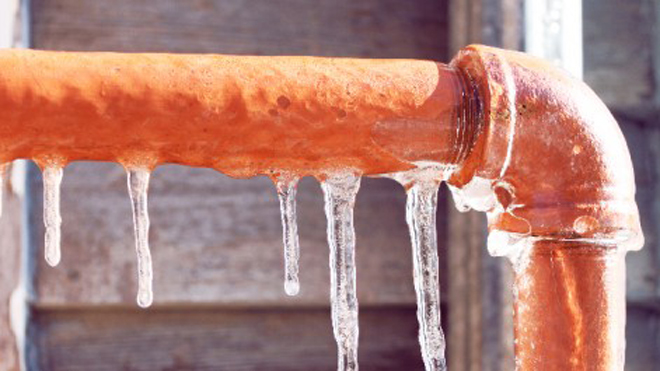Were you trying to locate info on How To Avoid Freezing Pipes?

Cold weather can damage your plumbing, specifically by freezing pipelines. Right here's just how to prevent it from taking place and what to do if it does.
Introduction
As temperature levels decline, the risk of frozen pipelines rises, potentially resulting in expensive fixings and water damage. Understanding exactly how to avoid frozen pipelines is crucial for homeowners in cold climates.
Understanding Frozen Pipelines
What creates pipelines to freeze?
Pipes freeze when revealed to temperature levels listed below 32 ° F (0 ° C) for prolonged periods. As water inside the pipelines freezes, it expands, putting pressure on the pipe wall surfaces and potentially causing them to break.
Threats and damages
Frozen pipes can lead to water supply disturbances, residential property damage, and pricey repairs. Burst pipes can flood homes and create considerable structural damage.
Indicators of Frozen Pipeline
Identifying icy pipelines early can avoid them from breaking.
Exactly how to recognize icy pipelines
Try to find lowered water flow from faucets, unusual smells or noises from pipelines, and visible frost on subjected pipelines.
Avoidance Tips
Insulating prone pipelines
Wrap pipes in insulation sleeves or use heat tape to shield them from freezing temperature levels. Focus on pipes in unheated or external locations of the home.
Heating strategies
Maintain interior rooms appropriately heated up, especially locations with plumbing. Open up cabinet doors to permit warm air to distribute around pipes under sinks.
Shielding Outside Pipes
Garden pipes and exterior taps
Detach and drain pipes yard hose pipes before winter months. Install frost-proof faucets or cover outdoor faucets with protected caps.
What to Do If Your Pipelines Freeze
Immediate activities to take
If you think icy pipelines, maintain faucets open up to eliminate stress as the ice melts. Use a hairdryer or towels taken in warm water to thaw pipelines slowly.
Long-Term Solutions
Architectural modifications
Consider rerouting pipelines away from exterior walls or unheated locations. Include extra insulation to attic rooms, cellars, and crawl spaces.
Upgrading insulation
Purchase high-quality insulation for pipes, attics, and walls. Appropriate insulation aids keep consistent temperature levels and minimizes the threat of frozen pipes.
Conclusion
Protecting against icy pipes requires proactive steps and quick responses. By comprehending the causes, indications, and preventive measures, homeowners can safeguard their plumbing during cold weather.
5 Ways to Prevent Frozen Pipes
Drain Outdoor Faucets and Disconnect Hoses
First, close the shut-off valve that controls the flow of water in the pipe to your outdoor faucet. Then, head outside to disconnect and drain your hose and open the outdoor faucet to allow the water to completely drain out of the line. Turn off the faucet when done. Finally, head back to the shut-off valve and drain the remaining water inside the pipe into a bucket or container. Additionally, if you have a home irrigation system, you should consider hiring an expert to clear the system of water each year.
Insulate Pipes
One of the best and most cost-effective methods for preventing frozen water pipes is to wrap your pipes with insulation. This is especially important for areas in your home that aren’t exposed to heat, such as an attic. We suggest using foam sleeves, which can typically be found at your local hardware store.
Keep Heat Running at 65
Your pipes are located inside your walls, and the temperature there is much colder than the rest of the house. To prevent your pipes from freezing, The Insurance Information Institute suggests that you keep your home heated to at least 65 degrees, even when traveling. You may want to invest in smart devices that can keep an eye on the temperature in your home while you’re away.
Leave Water Dripping
Moving water — even a small trickle — can prevent ice from forming inside your pipes. When freezing temps are imminent, start a drip of water from all faucets that serve exposed pipes. Leaving a few faucets running will also help relieve pressure inside the pipes and help prevent a rupture if the water inside freezes.
Open Cupboard Doors
Warm your kitchen and bathroom pipes by opening cupboards and vanities. You should also leave your interior doors ajar to help warm air circulate evenly throughout your home.

I ran across that blog post about How to prepare your home plumbing for winter weather while doing a search on the web. Do you know about another person who is fascinated about the subject? Please feel free to promote it. I am grateful for being here. Revisit us soon.
Call Today